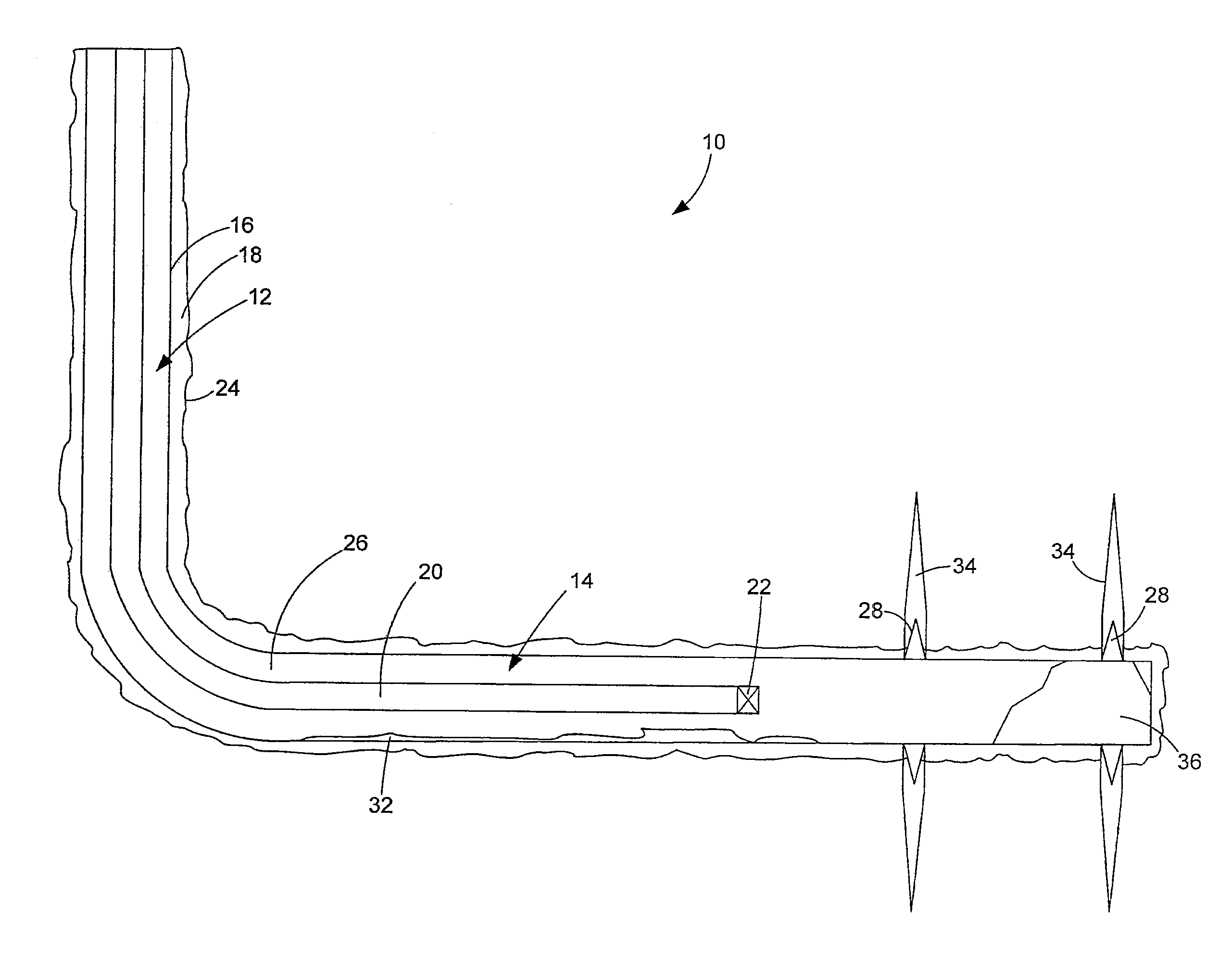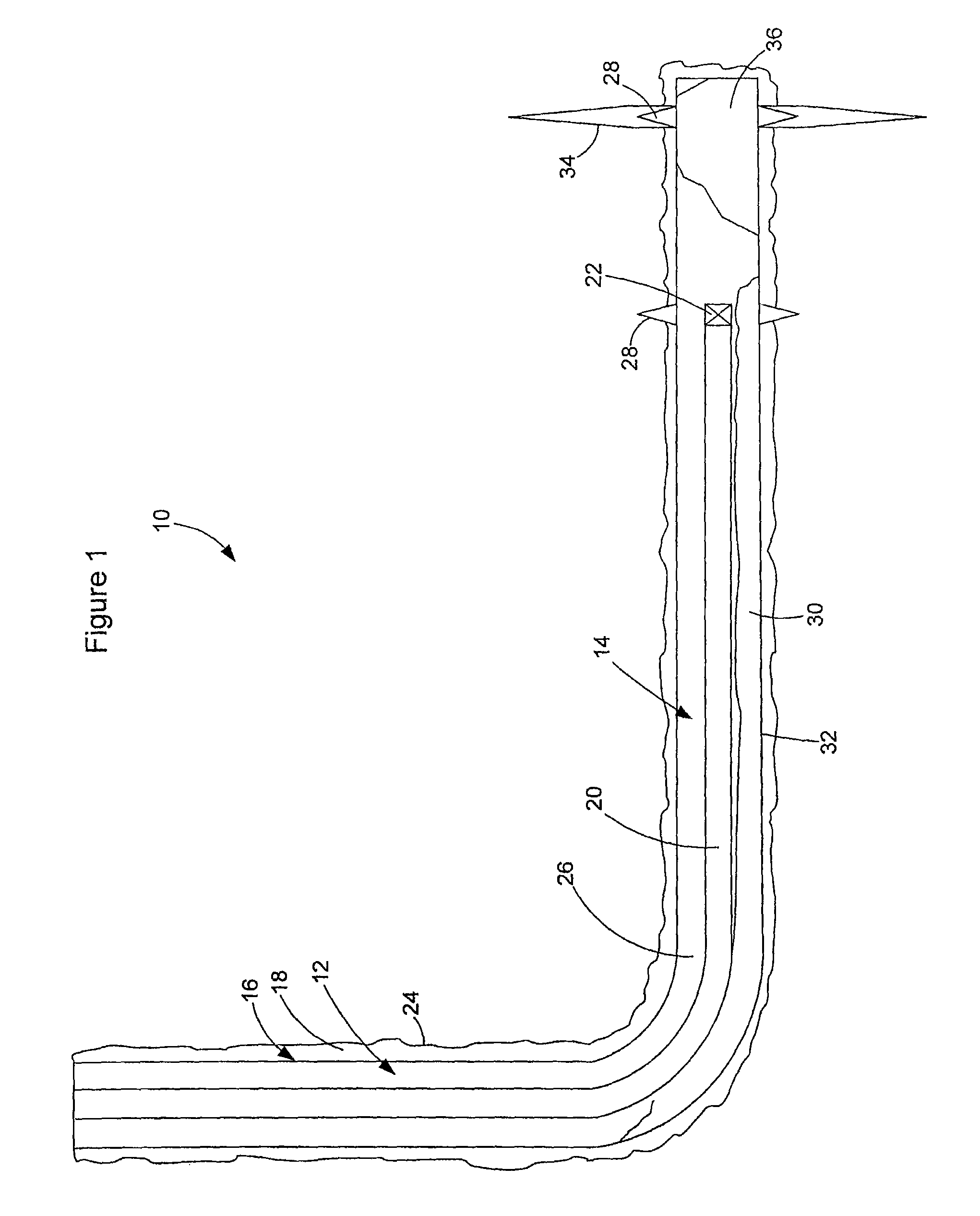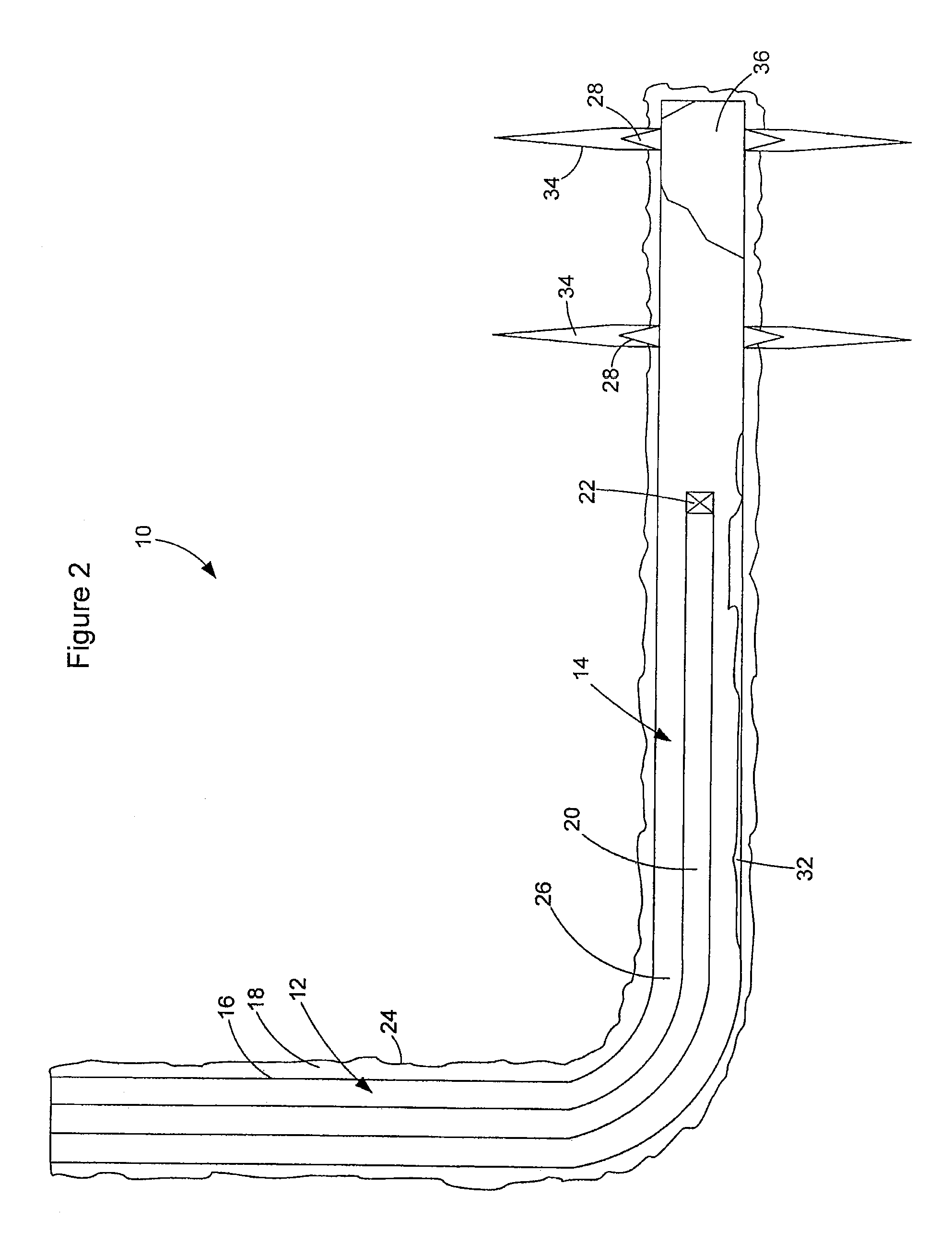Method of hydraulically fracturing a formation
a technology of hydraulic fracturing and formation, applied in the direction of fluid removal, earth-moving drilling, borehole/well accessories, etc., can solve the problems of fractures remaining propped open, fractures extending further into the formation, and formation fracturing, so as to reduce the likelihood that additional fracturing operations may be impeded by the sand in the well bor
- Summary
- Abstract
- Description
- Claims
- Application Information
AI Technical Summary
Benefits of technology
Problems solved by technology
Method used
Image
Examples
example 1
[0060]A standard hydraulic fracturing treatment operation is exemplified by FIG. 4. This operation was conducted subsequent to the abrasive perforation of the casing and cement. The initial process is to break down the formation. As exemplified in FIG. 4, the combined rate of fluid that is pumped into a well bore increases to 0.4 cubic meters per minute at five minutes of elapsed time. This increases the well head pressure to about 48 MPa. The pump rate is held constant until the thirty minute elapsed time mark at which time it is increased to 0.5 cubic meters per minute. The pressure gradually increases during this time until, at about fifty minutes, the pressure starts to reduce. This is considered to be the time at which the break down of the formation occurs.
[0061]The pump rate is kept constant with the pressure decreasing. This is considered to represent a further break down of the formation (i.e. the width and / or height and / or length of the fractures in the formation are growi...
example 2
[0062]FIG. 5 exemplifies a hydraulic fracture treatment where sand present in the horizontal section of the well impedes the fracturing operation. This operation was conducted subsequent to the abrasive perforation and hydraulic fracturing of a first zone and the abrasive perforation of the casing and cement of a second zone. As shown in FIG. 5, the pump rate is increased to about 1.8 m3 / min in about 10 minutes. The well head pressure initially increases sharply from 45 MPa to 40 MPa. The pressure then decreases to about 38 at about 8 minutes of elapsed time whereupon the pressure suddenly spikes to about 67 MPa. At this time, the pump rate drops to about 0. This is indicative of a sand off.
[0063]The sand off prevented further effective fracturing of that section of the formation. The volume of fluid that was pumped prior to the drop in the combined pump rate was equivalent to the volume between the abrasive perforations and the 45 / 90° deviation in the well. This indicates that the ...
example 3
[0064]This example exemplifies a hydraulic fracturing treatment using controlled flow rate fracturing according to this invention (see FIG. 6 and Table 1). This operation was conducted subsequent to the abrasive perforation of the casing and cement.
[0065]A fluid (water and a guar additive) was initially pumped into the well at about 0.4 m3 / min. The formation was broken at about 10 minutes elapsed time when the pressure climbed to 42 MPa. The break is indicated by the roll over or drop in pressure. The pump rate was slowly increased in steps to entrain sand from the well 14 in the fluid stream. At 45 minutes, the pump rate was increased to 1.4 m3 / min and the pressure spiked to 50 MPa. This increase in pressure indicated that the formation was sanding off. Accordingly, the pump rate was immediately reduced to about 1.15 m3 / min and the pressure decreased. The pump rate was then slowly increased in stages and small pressure spikes were detected. The pressure spikes indicated that sand w...
PUM
 Login to View More
Login to View More Abstract
Description
Claims
Application Information
 Login to View More
Login to View More - R&D
- Intellectual Property
- Life Sciences
- Materials
- Tech Scout
- Unparalleled Data Quality
- Higher Quality Content
- 60% Fewer Hallucinations
Browse by: Latest US Patents, China's latest patents, Technical Efficacy Thesaurus, Application Domain, Technology Topic, Popular Technical Reports.
© 2025 PatSnap. All rights reserved.Legal|Privacy policy|Modern Slavery Act Transparency Statement|Sitemap|About US| Contact US: help@patsnap.com



